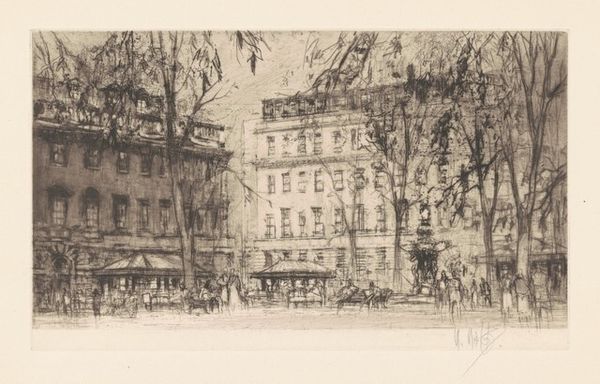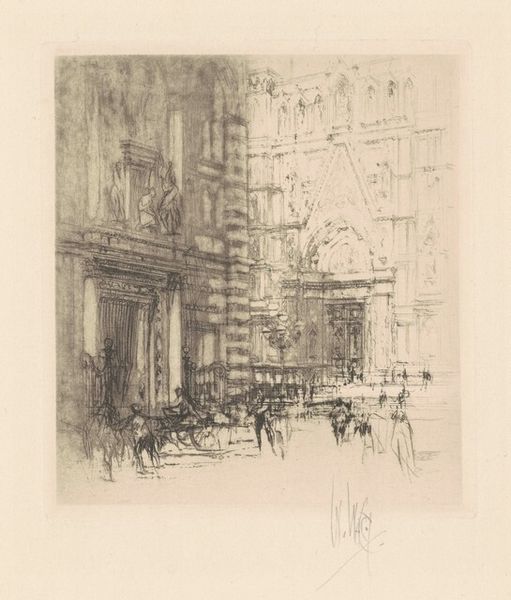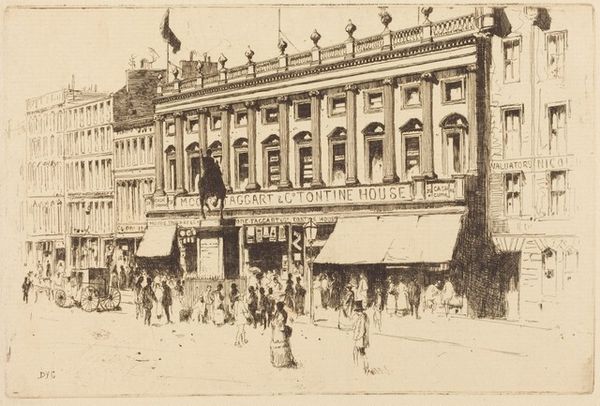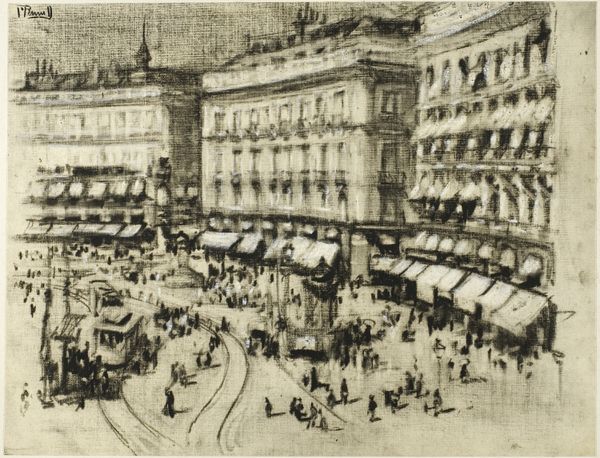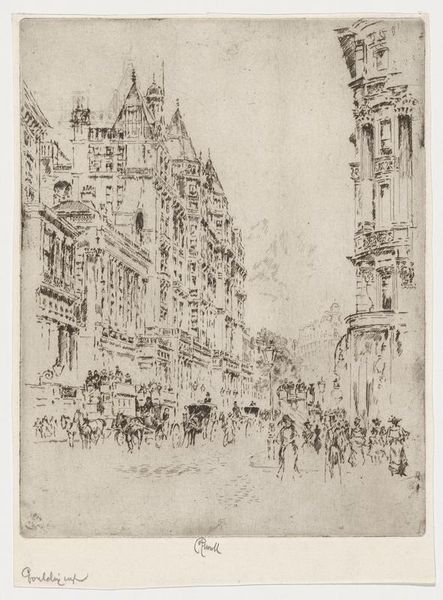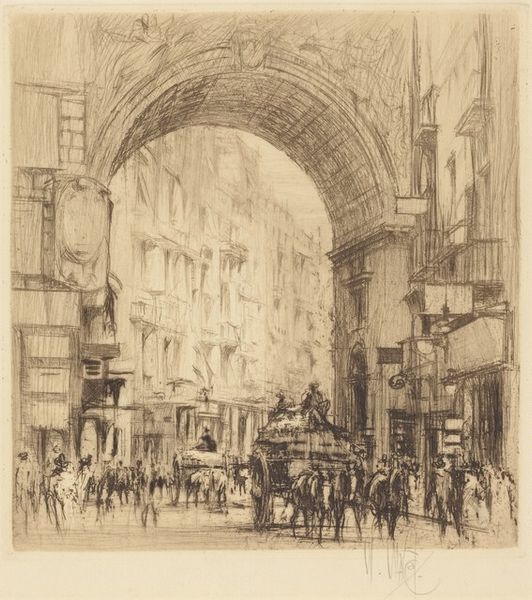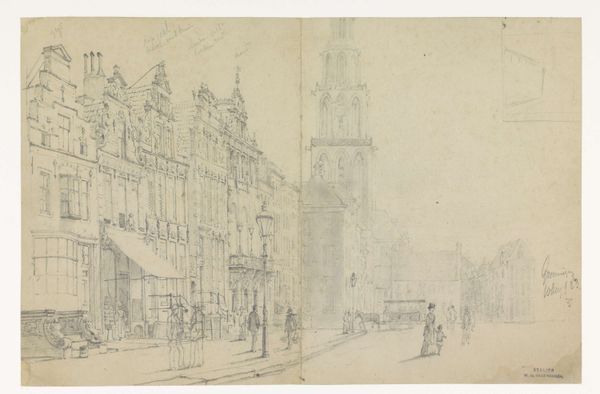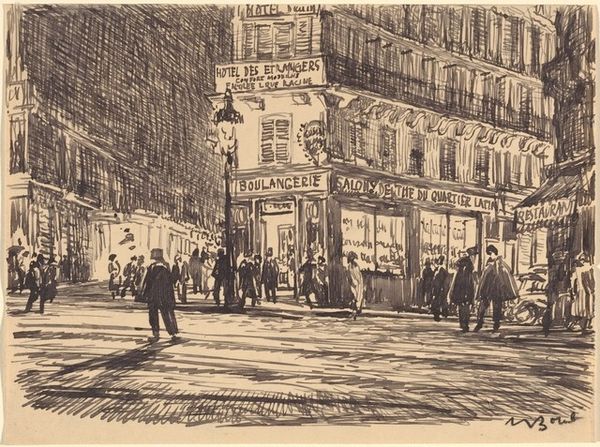
print, etching
# print
#
etching
#
landscape
#
cityscape
#
history-painting
#
realism
Dimensions: plate: 16.51 × 25.08 cm (6 1/2 × 9 7/8 in.) sheet: 23.18 × 34.61 cm (9 1/8 × 13 5/8 in.)
Copyright: National Gallery of Art: CC0 1.0
Editor: This is William Walcot's "Changing London—Euston Road at Saint Pancras," an etching from 1937. I’m immediately struck by how the artist captures a sense of bustling urban life, almost like a photograph snatched in the moment. What do you see in this piece that maybe I'm missing? Curator: I see more than just a snapshot; I see a commentary on progress and its impact on society. Consider the historical context. London in the 1930s was undergoing massive change, and art often reflected these tensions. Walcot captures not just the architecture, but the societal shift—the changing face of London, so to speak. How do you think the choice of etching as a medium informs that interpretation? Editor: Well, etching has a historical weight to it, right? It makes it seem like the change isn’t something new but part of a longer narrative. So the older medium almost emphasizes a loss of continuity and also implies some connection with previous centuries? Curator: Precisely. The technique itself speaks to history. Look closely: does the composition celebrate progress without any reservations, or is there a sense of unease? Where are the figures placed and what are they doing? How much sky do we see? Editor: Now that you point it out, there are so many figures, all quite small and obscured. The sky is practically nonexistent. So, while the scene seems busy, there’s a lack of air, a sense of crowding. Maybe it's not as celebratory as it seems at first. More documentary, perhaps, hinting at both the excitement and potential oppression of modernization? Curator: Exactly! We can read this not simply as a record but as a question: what is gained, and what is lost when a city changes so drastically? Whose stories get told, and whose get erased? It provokes important dialogue around urban development and the impact on its inhabitants. Editor: That completely changes how I view the work. Thanks; I hadn't considered that intersectional tension. It shows there's so much more than just architectural documentation here! Curator: Absolutely, this dialogue with the past makes it really resonate, even now.
Comments
No comments
Be the first to comment and join the conversation on the ultimate creative platform.
